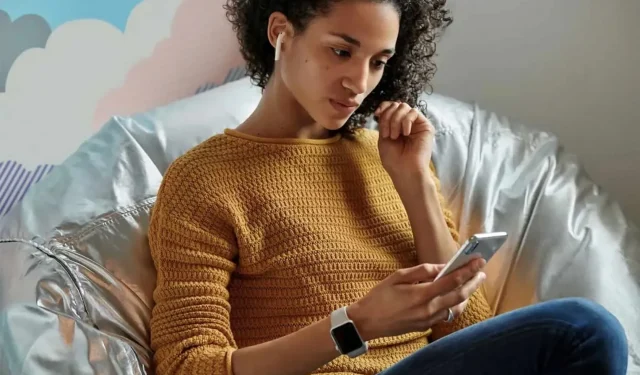With AirPods Pro 2, Apple is introducing adaptive transparency, which goes a step further than the existing transparency mode. Presentation.
What do you like most about AirPods Pro? For those who need to stay vigilant while listening to music, Transparency Mode easily wins the vote. And thankfully, Apple has made this mode so much better that it alone can justify buying a pair of these headphones.
How does AirPods transparency mode work?
If you don’t have AirPods Pro or AirPods Max, Transparency Mode uses the AirPods’ microphones to analyze ambient noise. The earphones sit tightly in the ears, it seems that there is nothing in the ears. Turn off the transparency mode and the noise will disappear, bringing you back to the silence of your music.
This feature is perfect for when you want to listen to music or a podcast, but need to stay alert when you’re walking outside or in a room where people are nearby. Transparency mode makes it easy to follow the conversation without removing the earpiece.
But this mode does not control the intensity of sounds around you. If something very loud sounds like a siren or horn, your AirPods will send that sound to your ears. It happens from time to time and it’s not very pleasant.
Adaptive transparency spares your ears
However, the AirPods Pro 2 benefit from adaptive transparency. This version of Transparency Mode reduces the intensity of any sound above 85dB while keeping the rest as real as they are. It’s like a mixer is constantly connected to your ears, so that the sounds that reach you are constantly balanced. And there is no noticeable delay. Apple claims that its H2 chip is capable of processing these noises 48,000 times per second.
Apple isn’t the first to come up with a feature like adaptive transparency. Bose has something similar with the QuietComfort Earbuds II, but PCMag says the latter isn’t as perfect as Apple.
Al Griffin of TechRadar wore his AirPods Pro 2 during the concert, peaking at 114.7 dB, but thanks to adaptive transparency, his ears only heard sounds capped at 85 dB. Although AirPods are more expensive than regular headphones, Al Griffin explains that headphones muffle the sound too much, while AirPods remain perfectly audible. If the experience isn’t exactly perfect, Al Griffin concluded by saying that he’ll wear his AirPods Pro 2 to the next gig.
However, it would seem that you don’t have to buy a new pair of AirPods Pro to take advantage of adaptive transparency. Apple iOS 16.1, which is currently in beta, gives the AirPods Pro an adaptive transparency mode, despite the absence of the H2 chip that enables the feature in the AirPods Pro 2. If this feature works on the original AirPods Pro, it obviously does. won’t be as efficient.. Maybe the delay will be a bit longer since the H1 chip is not that fast. In any case, if you can take advantage of adaptive transparency without shelling out the asking €299, that’s very good.
If Apple manages to offer its adaptive transparency for the first generation of AirPods Pro, it may offer it for AirPods Max as well. We’ll have to wait for the rollout of iOS 16.1 to find out.


